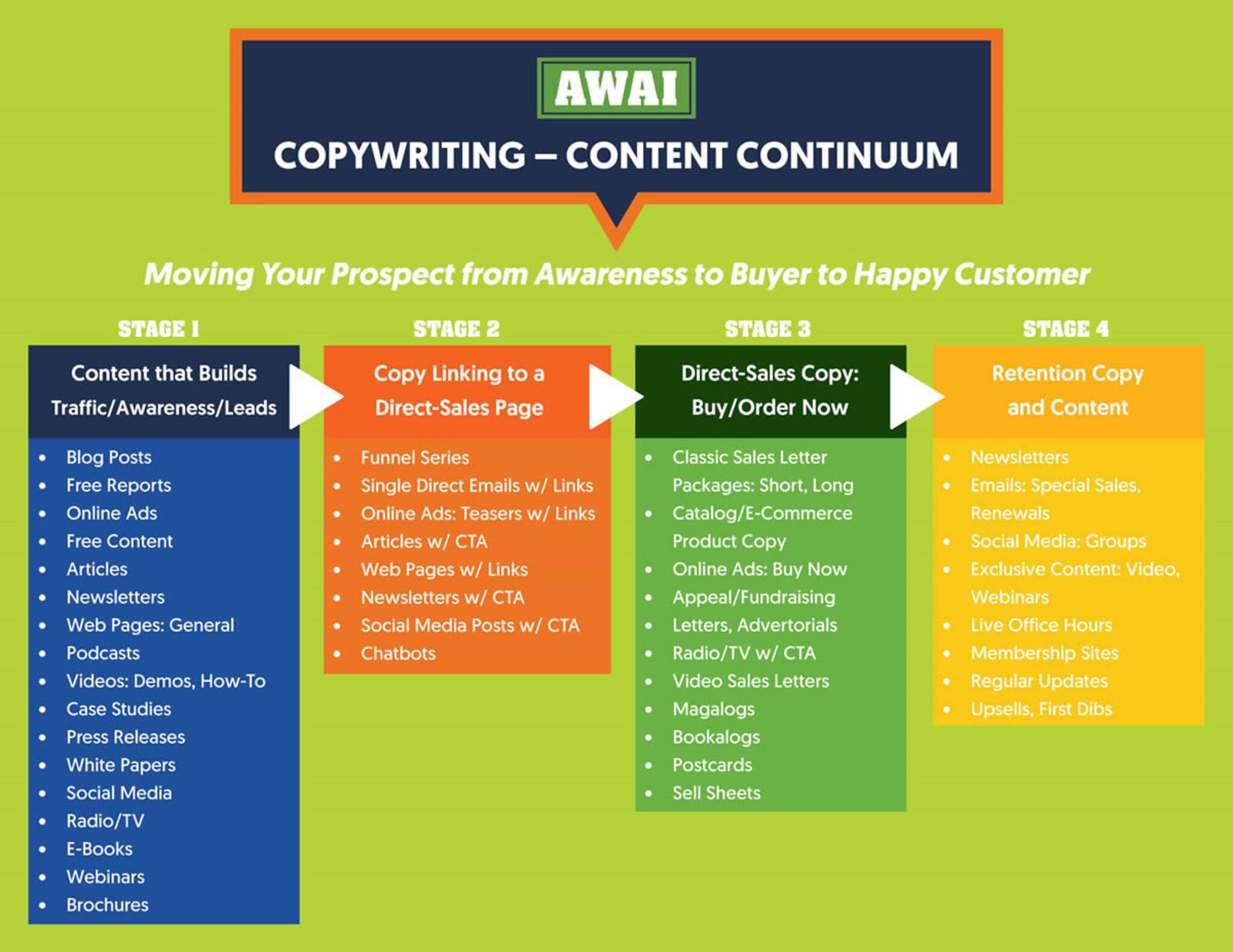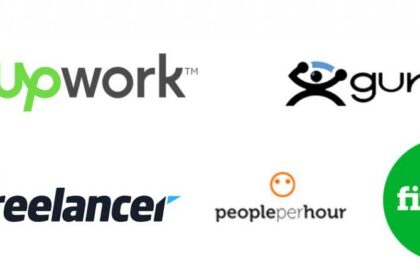In a world where the traditional 9-to-5 job is increasingly complemented—if not entirely replaced—by flexible career paths, freelance writing stands out as a vibrant avenue for creative expression and professional autonomy. “Crafting Your Path: The Journey of Freelance Writing” delves into the multifaceted landscape of this dynamic field, exploring the nuances that define the freelance writer’s experience. From the exhilarating thrill of pitching a fresh idea to the quiet solitude of a home office, the life of a freelance writer is both liberating and challenging. Join us as we unravel the steps to building a successful freelance career, sharing insights, strategies, and personal anecdotes that illuminate the journey ahead. Whether you’re a seasoned writer or just contemplating the plunge into freelance waters, this article will serve as your compass, guiding you through the ebb and flow of creativity and independence.
Freelance Writing
Embarking on a journey in the world of is akin to stepping into a vast literary landscape, where every turn presents a new opportunity. This path allows you to explore diverse niches, from blogging and copywriting to technical writing and creative storytelling. Each niche demands a unique set of skills and an understanding of various audiences, giving you the chance to hone your craft continuously. As you navigate this journey, building a portfolio showcasing your best work becomes essential. Consider focusing on:
- Quality over Quantity: Select pieces that reflect your strongest writing.
- Variety: Experiment with different styles and formats.
- Relevance: Share work that resonates with your target clients or publications.
As you establish your career, networking plays a crucial role. Connecting with fellow writers, editors, and potential clients can open doors to new opportunities. Attend workshops, join online forums, and participate in social media groups related to writing to expand your professional circle. Additionally, consider maintaining a personal blog or website to showcase your work and thoughts on industry trends, which can serve as a platform for:
| Niche | Potential Clients |
|---|---|
| Blogging | Brands, Small Businesses |
| Copywriting | Advertising Agencies, eCommerce Sites |
| Technical Writing | Technology Firms, Educational Institutions |
| Creative Writing | Literary Magazines, Publishers |
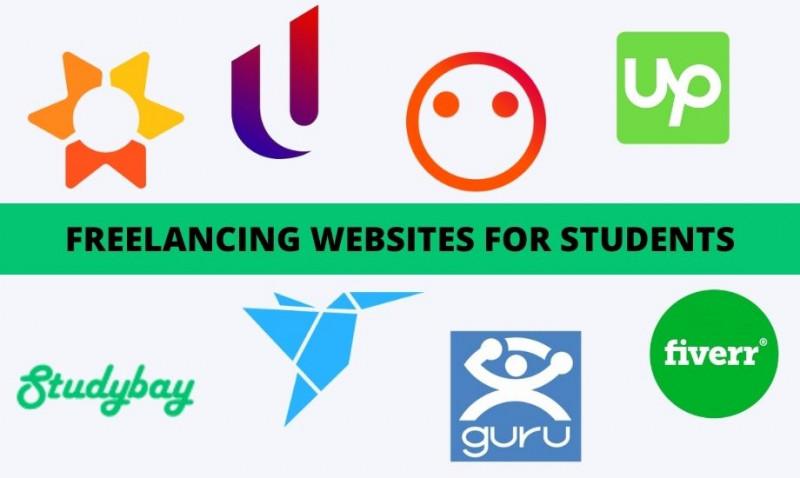
Freelancing Platforms
In the dynamic realm of freelance writing, selecting the right platform can significantly influence your success. Numerous websites cater specifically to freelancers, offering a range of opportunities across various niches. Here are some popular options to consider:
- Upwork: A leading platform where writers can bid on projects, showcasing their skills and experience to potential clients.
- Fiverr: Allows writers to create service listings, enabling clients to choose from predefined packages that suit their needs.
- Freelancer: Highlights a competitive bidding process, where freelancers can submit proposals to projects that capture their interests.
- Guru: Offers a user-friendly interface with a robust workroom for collaboration between freelancers and clients.
Exploring these platforms requires understanding their unique features and target audiences. For a quick comparison, refer to the table below:
| Platform | Type of Work | Payment Model | Target Audience |
|---|---|---|---|
| Upwork | Varied projects | Hourly & Fixed | Businesses & Entrepreneurs |
| Fiverr | Service offerings | Fixed | Small businesses & Individuals |
| Freelancer | Varied projects | Hourly & Fixed | Global clients |
| Guru | Project collaboration | Hourly & Fixed | Businesses seeking freelancers |

Freelance Graphic Design
In the realm of , creativity meets entrepreneurship, allowing artists to chart their own course in a rapidly evolving digital landscape. This path offers numerous opportunities to collaborate with various clients, each with unique visions and challenges. As you carve your niche, consider the following key elements that can elevate your design endeavors:
- Portfolio Development: Curate a diverse portfolio showcasing your best work to attract potential clients.
- Networking: Build relationships with other creatives and industry professionals to expand your reach.
- Brand Identity: Establish a cohesive personal brand that reflects your style and attracts your target audience.
- Continued Learning: Stay updated with design trends and software to enhance your skills and offerings.
Embracing the freelance lifestyle requires not only artistic talent but also a strong business sense. Managing multiple projects, meeting deadlines, and effectively communicating with clients are all essential skills for success. To navigate this complex world, freelancers often benefit from tracking their time and finances. A simple yet effective method to manage your workflow can be illustrated in the table below:
| Task | Time Estimated | Rate (Per Hour) |
|---|---|---|
| Client Consultation | 1 hour | $50 |
| Design Concept Development | 3 hours | $150 |
| Revisions and Feedback | 2 hours | $100 |
| Final Edits and Delivery | 1 hour | $50 |

Freelance Web Development
Embracing the world of offers a unique opportunity to blend creativity with technical prowess. As a freelance developer, you become the architect of your own digital landscapes, transforming abstract ideas into visually stunning and functional websites. The freedom to choose projects that resonate with your interests allows you to continuously evolve your skill set. Consider these foundational elements that define a successful journey:
- Networking: Cultivating relationships within the industry can lead to referrals and collaborative projects.
- Portfolio Development: A diverse portfolio showcasing various styles and functionalities is essential to attract clients.
- Continuous Learning: Staying updated with the latest technologies and trends ensures your skills remain relevant.
To streamline your workflow and maximize productivity, it’s crucial to set up an effective work environment. This involves not only your physical workspace but also the tools and resources you use. Many freelancers find that employing specific tactics enhances their focus and efficiency:
| Tool/Resource | Description |
|---|---|
| Code Editors: | Versatile programs that provide syntax highlighting and debugging tools. |
| Version Control: | Essential for tracking changes and collaborating on projects. |
| Project Management Tools: | Platforms that help keep projects organized and deadlines manageable. |
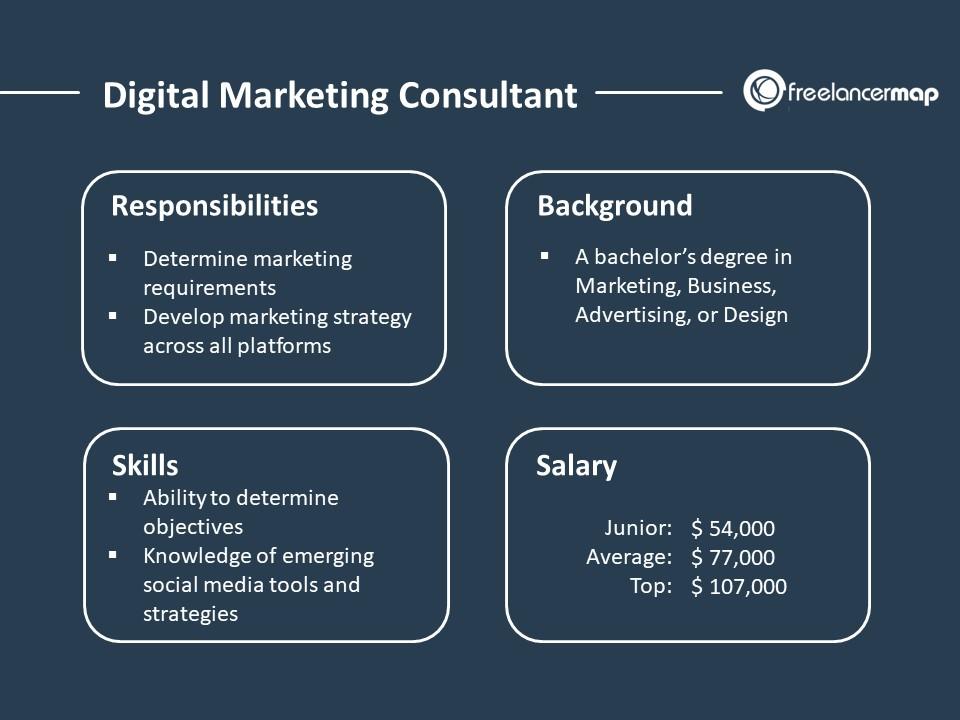
Freelance Marketing Consultant
As a , you occupy a unique space where creativity meets strategy. Your ability to adapt to different industries and client needs sets you apart. Each project is a new canvas, requiring you to paint with diverse colors of market trends, consumer behavior, and brand identity. It’s essential to stay updated with the latest tools and techniques in the ever-evolving marketing landscape. Your role involves not just implementation, but also ideation, which allows you to drive campaigns that resonate with target audiences.
To thrive in this field, consider focusing on a few key areas:
- Understanding Client Needs: Regular communication and thorough research will help you grasp the essence of what your clients seek.
- Data-Driven Decisions: Utilize analytics tools to inform your strategies and adapt as needed by constantly measuring campaign performance.
- Building a Portfolio: Showcase diverse examples of your work to attract potential clients and demonstrate your expertise.
- Networking: Engage with other professionals in the industry to exchange ideas, tips, and potential collaborations.
| Skill | Importance |
|---|---|
| SEO Knowledge | High |
| Content Creation | Medium |
| Social Media Marketing | High |
| Client Management | Critical |

Freelancing for Beginners
Embarking on a freelance writing career can be both exhilarating and daunting for newcomers. To kick-start your journey, it’s crucial to establish a strong foundation by honing your writing skills and finding your niche. Consider exploring various genres such as blog posts, articles, copywriting, or technical writing to discover what resonates with you. Don’t hesitate to invest time in enriching your knowledge through online courses, workshops, and writing communities. Additionally, building a portfolio is essential; even if you have no clients at the outset, you can create sample pieces that showcase your writing style and versatility.
Another key aspect of freelancing is understanding how to market yourself effectively. Utilize social media platforms and freelance job boards to connect with potential clients and showcase your expertise. Networking with other writers can also open doors and provide valuable insights into the industry. To organize your workload and clients, establishing a simple management system is worthwhile. Here’s a basic layout to help you keep track:
| Client | Project | Deadline | Status |
|---|---|---|---|
| Client A | Blog Post | 10/15/2023 | In Progress |
| Client B | Website Copy | 10/20/2023 | Pending |
| Client C | Newsletter | 10/25/2023 | Completed |

Freelance Project Management
For freelance writers, managing multiple projects simultaneously is both an opportunity and a challenge. Establishing a clear framework for project management can enhance productivity and ensure timely delivery. Here are some fundamental strategies:
- Set Clear Goals: Outline what you aim to achieve with each project. This could range from word count targets to deadlines.
- Organize Tasks: Break down your writing projects into manageable tasks. This makes the process less daunting and allows for progress tracking.
- Time Management: Implement techniques like the Pomodoro Technique to maximize focus and efficiency during writing sessions.
Effective communication with clients is essential for successful . Regular updates not only foster trust but also help in aligning expectations. Incorporating feedback promptly can enhance the quality of your work, allowing for smoother revisions. Consider maintaining a simple tracking table:
| Project Name | Status | Deadline | Client Feedback |
|---|---|---|---|
| Website Content | In Progress | 2023-11-15 | Awaiting |
| Blog Series | Completed | 2023-10-20 | Positive |
| Copywriting for Ads | Pending | 2023-12-01 | N/A |

Remote Freelance Jobs
For those embarking on the adventure of freelance writing, exploring remote job opportunities presents a world of possibilities. Unlike traditional roles that bind you to a specific location, the freelance landscape allows you to tap into a global marketplace. Whether you’re an aspiring novelist, a seasoned blogger, or a skilled copywriter, here are a few avenues to consider:
- Content Creation: Engage in blog posts, articles, and e-books for various industries.
- Technical Writing: Contribute to manuals, user guides, and product descriptions.
- Social Media Management: Crafting compelling posts to enhance brand visibility.
- SEO Writing: Optimizing content for search engines to increase online traction.
Within this realm, it’s essential to understand the types of contracts and payment structures that come with . Freelancers often choose between project-based or hourly rates. Different platforms offer diverse options, making it crucial to identify what aligns best with your professional goals:
| Payment Structure | Description |
|---|---|
| Hourly Rates | Determined by the number of hours worked on a project, offering flexibility. |
| Fixed-Price Contracts | A predetermined sum for a specific project, providing clarity on earnings. |
| Retainer Agreements | A regular monthly fee for ongoing work, ensuring consistent income. |

Freelance Photography
The world of is as vibrant and diverse as the images captured through the lens. As a freelancer, you have the artistic freedom to explore various genres and find your niche. Whether it’s portrait, landscape, or wedding photography, each area presents unique challenges and opportunities for showcasing your talent. Embracing this flexibility allows you to blend personal style with client demands, ultimately crafting memorable stories through visuals that resonate with viewers.
Success in this field hinges on building a strong portfolio that reflects your unique voice and vision. It’s essential to curate a body of work that not only showcases your skills but also attracts your ideal clients. Consider the following steps to enhance your journey:
- Network: Connect with fellow photographers and potential clients through social media or local events.
- Create a Website: Establish an online presence to display your portfolio and services.
- Invest in Equipment: Use high-quality cameras and lenses to ensure top-notch photography.
- Seek Feedback: Regularly evaluate your work and seek constructive criticism from peers.

Freelance Video Editing
Embracing the dynamic realm of opens up a world rich with creative possibilities. As a freelancer, you will find yourself curating visual narratives that not only engage audiences but also enhance the storytelling of various projects. It requires a keen eye for detail, the ability to interpret a client’s vision, and the technical prowess to execute it flawlessly. The beauty of freelancing lies in your autonomy; you can choose projects that resonate with your personal interests while developing a diverse portfolio that showcases your unique style.
Successful freelance video editors often adopt a strategic approach to their career. Consider the following elements essential for building a thriving freelance business:
- Networking: Cultivating relationships with potential clients and collaborators can lead to unexpected opportunities.
- Skill Development: Continuous learning is key, whether through online courses or hands-on practice with new editing software.
- Branding: Establish a personal brand that reflects your editing style and attracts the right clientele.
- Time Management: Balancing multiple projects while meeting deadlines is crucial to maintaining professionalism and client satisfaction.
| Essential Tools | Purpose |
|---|---|
| Adobe Premiere Pro | Industry-standard video editing software. |
| Final Cut Pro | Popular among Mac users for its seamless interface. |
| After Effects | Powerful tool for motion graphics and visual effects. |
| DaVinci Resolve | Cinematic color grading and advanced editing features. |

Freelance Social Media Manager
In the vibrant world of social media, a wears many hats, each one more colorful than the last. This dynamic role demands not only creativity but also a keen understanding of audience engagement and brand identity. From crafting compelling posts to analyzing engagement metrics, these professionals help brands connect with their audience in meaningful ways. They must stay ahead of trends and emerging platforms, ensuring that the content resonates and drives interaction. Important skills for success include:
- Content Creation – Developing posts that are visually appealing and on-brand.
- Analytics – Utilizing data to refine strategies and improve outreach.
- Community Management – Engaging directly with followers and creating a loyal community.
- Trend Awareness – Staying updated with the latest social media trends and features.
Moreover, a freelancer in this field often enjoys the flexibility to choose their clients and set their schedules. This autonomy allows them to explore a diverse range of projects, from working with local businesses to collaborating with large corporations. Networking plays a crucial role in building a successful freelance career; attending industry events and actively participating in online communities can open doors to new opportunities. The path of a is a blend of creativity, strategy, and relationship-building, where every post can lead to new conversations and connections.
| Aspect | Importance |
|---|---|
| Creativity | Drives engagement and brand awareness |
| Strategy | Ensures content aligns with business goals |
| Adaptability | Helps navigate the ever-changing digital landscape |

Freelance SEO Expert
As the digital landscape evolves, the demand for specialized skills like SEO is on the rise among freelance writers. By mastering the intricacies of search engine optimization, you enhance your portfolio and make yourself a sought-after asset for businesses striving for visibility in an ever-competitive online environment. Key areas to focus on include:
- Keyword Research: Understanding the terms your audience uses helps tailor your content.
- On-Page Optimization: Crafting compelling headlines and meta descriptions boosts click-through rates.
- Link Building: Establishing backlinks enhances credibility and improves search rankings.
Integrating SEO into your freelance writing not only elevates your skill set but also improves the efficacy of your work. It allows you to create content that doesn’t just resonate with readers but also ranks well on search engines, ensuring that your words reach a wider audience. Consider maintaining a simple tracking table to assess the impact of your SEO strategies on various writing projects:
| Project | Keyword Focus | Traffic Increase (%) |
|---|---|---|
| Blog Post A | Content Marketing | 40 |
| Website Copy B | SEO for Beginners | 25 |
| Article C | Freelance Tips | 30 |

Freelance Copywriting
Embracing the world of is like stepping into a vast, uncharted territory, filled with opportunities just waiting to be discovered. As a freelance copywriter, your journey begins with honing your craft, which involves not just mastering the art of words, but also understanding the landscapes of marketing and audience engagement. Create a personal brand that reflects your unique voice and skills; this will differentiate you in a crowded market. Key strategies to guide you include:
- Building a Portfolio: Start with a collection of your best work, showcasing diverse styles and industries.
- Networking: Connect with fellow writers, marketers, and potential clients through platforms like LinkedIn or local meetups.
- Continuous Learning: Stay updated with the latest trends in copywriting, SEO, and digital marketing to keep your skills sharp.
Once you’ve established yourself, the next phase is managing your workflow and client relationships effectively. Balancing multiple projects requires not just creativity but also excellent organizational skills. Consider leveraging tools that help streamline your process, such as project management software or invoicing tools. Here’s a quick reference table to outline essential aspects of managing client collaborations:
| Aspect | Tip |
|---|---|
| Communication | Set clear expectations and deadlines from the start. |
| Feedback | Encourage constructive criticism to improve your work. |
| Invoicing | Use professional templates to enhance your branding. |

Freelance Business Tips
Starting a freelance writing career requires not only skill but also strategic planning. To thrive in this competitive landscape, consider the following essentials:
- Build a Portfolio: Showcase your best work to attract potential clients.
- Network Actively: Engage with other writers and join relevant groups to expand your connections.
- Set Clear Rates: Establish your pricing structure early to maintain consistency and professionalism.
- Utilize Social Media: Market your services through platforms like LinkedIn and Twitter to reach a broader audience.
Moreover, managing your time and finances effectively is crucial for sustaining your freelance career. Implement these tips to enhance your productivity:
| Tip | Description |
|---|---|
| Plan Your Day | Create a daily schedule to allocate specific times for writing and client communications. |
| Track Your Income | Use apps or spreadsheets to keep tabs on your earnings and expenses for better financial management. |
| Set Boundaries | Define your working hours to maintain a work-life balance and avoid burnout. |

Freelance Rates and Pricing
Setting your freelance writing rates can feel like navigating a winding road. The first step is to assess your skills, experience, and the value you provide to clients. Consider these factors when determining your rates:
- Experience Level: Beginners might start lower to build a portfolio, while established writers can command higher rates.
- Type of Content: Different niches have varying market rates; specialized topics like technical writing often pay more.
- Client Budget: Research potential clients to gauge their budget constraints and align your rates accordingly.
It’s also important to decide whether you’ll charge by the word, hour, or project. Each method has its advantages:
| Billing Method | Advantages |
|---|---|
| Per Word | Allows scalability and clarity on payment; easier for clients to estimate costs. |
| Per Hour | Compensates for time spent on research and revisions; good for long-term projects. |
| Per Project | Provides a flat rate that can be attractive to clients; reduces the pressure of time tracking. |

Building a Freelance Portfolio
To create an impressive freelance portfolio, start by showcasing your best work that aligns with your target clientele. Select pieces that not only reflect your unique voice but also demonstrate a range of styles and formats. Aim to include:
- Published Articles: Links or snippets of your work on reputable platforms.
- Personal Projects: Creative pieces that highlight your passion and skills.
- Client Testimonials: Feedback from past clients that adds credibility and showcases your professionalism.
Organizing your portfolio effectively is just as important as the content itself. Use an intuitive layout, dividing your sections into categories that make it easy for potential clients to navigate. Consider a simple table structure for quick reference:
| Category | Sample Work | Link |
|---|---|---|
| Blog Posts | How to Write Engaging Content | View |
| Copywriting | A Guide to Effective Copy | View |
| Reviews | Top 10 Tools for Writers | View |
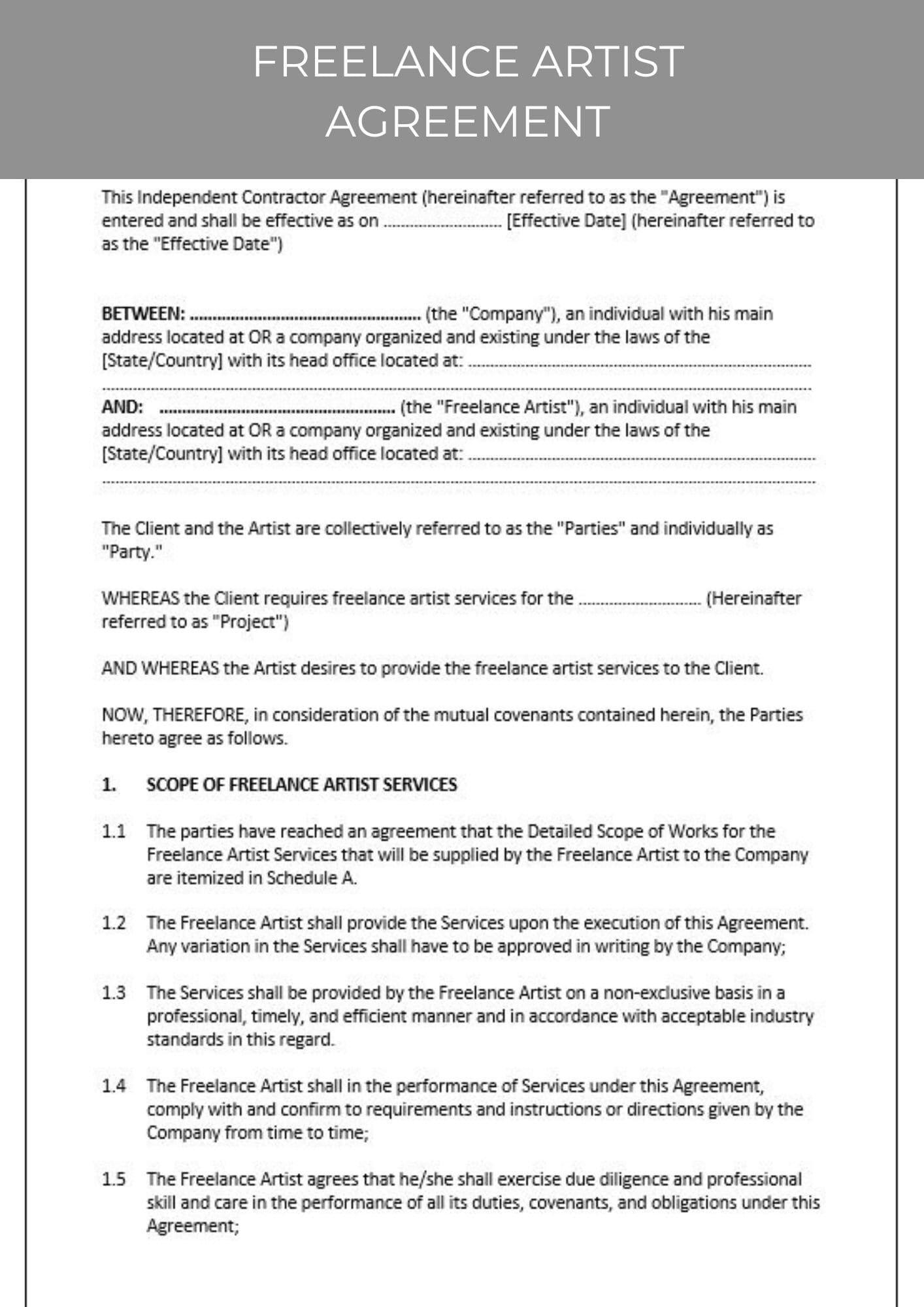
Freelance Contract Templates
For freelance writers, having a solid contract in place is vital to protect both parties involved in the transaction. A well-crafted document outlines responsibilities, expectations, and payment terms, ensuring clarity from the get-go. can serve as a foundation to create customized agreements suited to specific projects. When drafting your contract, consider including the following elements:
- Scope of Work: Clearly define the writing tasks and deliverables.
- Payment Terms: Specify the fee structure, payment schedule, and method of payment.
- Deadlines: Establish timelines for submissions and revisions.
- Intellectual Property Rights: Clarify ownership of the content produced.
- Confidentiality Clauses: Protect sensitive information from disclosure.
Utilizing templates can facilitate efficiency while ensuring that crucial aspects of the agreement are not overlooked. The following table summarizes key types of freelance contracts commonly used in the industry:
| Contract Type | Description |
|---|---|
| Project-Based Contract | Designed for specific projects with a clear end goal. |
| Hourly Contract | Payment based on time spent on the project, ideal for ongoing work. |
| Retainer Agreement | A long-term arrangement providing consistent services over time. |
Freelance Time Management
Effective time management is crucial for freelancers, especially in the dynamic world of writing where deadlines can be both tight and flexible. To make the most of your time, consider implementing a structured routine that accommodates both the demands of your projects and your personal workflow. Here are some strategies to enhance your productivity:
- Prioritize Tasks: Start each day by identifying your most pressing assignments and tackle them first.
- Use Online Tools: Leverage project management tools like Trello or Asana to organize tasks and keep track of deadlines.
- Set Specific Goals: Break larger projects into smaller, manageable tasks to maintain focus.
- Establish Boundaries: Create a dedicated workspace and set working hours to limit distractions.
Another effective method is the Pomodoro Technique, where you work for 25 minutes followed by a 5-minute break. This approach allows for bursts of creativity while preventing burnout. Keeping track of your time can also reveal patterns in your productivity—understanding when you write best can lead to setting aside those peak hours for your most important tasks. Here’s a simple comparison table of productive time slots versus non-productive time slots:
| Time Slot | Productive Level |
|---|---|
| Morning (8 AM – 11 AM) | High |
| Afternoon (1 PM – 3 PM) | Medium |
| Evening (6 PM – 8 PM) | Low |

Freelance Networking
Building a strong network can be the cornerstone of a successful freelance writing career. By fostering genuine relationships within the industry, you not only enhance your visibility but also gain access to new clients and opportunities. To effectively network, consider engaging with:
- Online Communities: Join platforms such as LinkedIn, Facebook groups, or specialized forums where fellow writers gather.
- Writing Events: Attend workshops, webinars, or conferences to meet peers and industry leaders face-to-face.
- Collaborative Projects: Partner with other freelancers on joint ventures, which can expand your reach and portfolio.
Networking is not just about collecting contacts; it’s about nurturing relationships that can support your growth. Establishing authentic connections often leads to referrals, mentorship, and collaborative opportunities. Regularly share your work, reach out for feedback, and provide value to your network by:
- Offering Assistance: Be willing to help others in your network, whether it’s through sharing resources or giving constructive advice.
- Engaging on Social Media: Comment on and share valuable content from others to stay involved and visible.
- Creating Meaningful Content: Craft articles or blogs that resonate with your audience, positioning yourself as an expert in your niche.
Freelancing in Tech
As the digital landscape continues to evolve, has emerged as an exciting avenue for writers to explore. Tech freelancing offers a plethora of opportunities that allow individuals to shape their careers on their own terms. From crafting engaging blog posts to producing in-depth white papers, tech writers play a vital role in bridging the gap between complex information and accessible content. Some of the key niches within this realm include:
- Software Development Documentation
- Tech Reviews and Product Comparisons
- SEO Optimization for Tech Companies
- Content Strategy for Startups
To thrive in this competitive environment, aspiring tech writers must hone their skills and adopt a proactive approach. Understanding industry trends and continuously seeking knowledge is essential. Here are some effective strategies that can enhance a freelance writer’s success:
- Create a Portfolio: Showcase a range of writing samples that reflect your expertise.
- Network with Professionals: Engage with tech communities and attend industry events.
- Utilize Social Media: Leverage platforms like LinkedIn and Twitter to connect and share your work.
- Keep Learning: Follow relevant blogs, podcasts, or courses to stay updated.
Freelance Taxes and Accounting
As a freelance writer, navigating the world of taxes and accounting can seem daunting, but it doesn’t have to be overwhelming. Understanding the financial responsibilities that come with being your own boss is crucial for maintaining your independence and financial health. Here’s what you need to keep in mind:
- Track Your Income: Keep a detailed record of all your earnings. Use tools like spreadsheets or accounting software to categorize your income streams.
- Understand Deductions: Familiarize yourself with potential tax deductions, such as home office expenses, software subscriptions, and education costs.
- Set Aside for Taxes: It’s wise to reserve a percentage of each paycheck for tax payments to avoid any last-minute financial stress.
To further simplify your tax preparation, consider engaging with an accountant who specializes in freelance work or using an online tax service. Make sure you understand essential tax deadlines and keep an organized filing system for your receipts and tax documents. Below is a simple reference table to help you stay on track:
| Key Item | Due Date |
|---|---|
| Quarterly Estimated Tax Payments | April 15, June 15, September 15, January 15 |
| Annual Tax Return Deadline | April 15 |
| Form 1099-MISC Submission | January 31 |

Freelance Client Retention
In the ever-evolving landscape of freelance writing, retaining clients is just as vital as acquiring new ones. To ensure a stable flow of projects, it’s essential to cultivate strong relationships built on communication and trust. Here are some strategies to consider:
- Consistent Communication: Keep clients updated on project status, and be proactive in addressing any questions or concerns.
- Personal Touch: Personalize your interactions. Remember special dates or milestones, which shows investment in the relationship.
- Quality and Timeliness: Deliver work that exceeds expectations, and meet deadlines consistently to foster reliability.
Moreover, showing appreciation can significantly impact client retention. Simple gestures can leave lasting impressions. Consider maintaining a structured acknowledgment strategy to enhance your client relationships:
| Gesture | Description |
|---|---|
| Thank-You Emails | A quick note expressing gratitude for their business and trusting you with their projects. |
| Feedback Requests | Invite feedback not only on your work but also on their experience working with you. |
| Special Offers | Provide discounts or additional services on future projects for long-term clients. |
Freelancing Full-Time vs Part-Time
Choosing between full-time and part-time freelancing is a pivotal decision that shapes your career trajectory. Full-time freelancing offers the thrill of total commitment, allowing writers to immerse themselves in their craft. This path often provides greater opportunities for building a diverse portfolio, attracting more clients, and setting competitive rates. By fully dedicating time to writing, freelancers can also refine their skills more rapidly and establish a routine that fosters productivity. However, it demands a strong foundation of self-discipline and financial stability, as income can be inconsistent, especially during initial phases.
On the other hand, part-time freelancing offers flexibility, enabling writers to balance their passions with other commitments such as a day job or family responsibilities. This approach allows for reduced pressure, as individuals can gradually build a client base without the weight of full financial reliance on their freelance work. As freelancers test the waters, they can assess their strengths, preferences, and market demands without the risk that full-time pressures often impose. This path is especially appealing for those looking to minimize risks while still engaging creatively in writing.
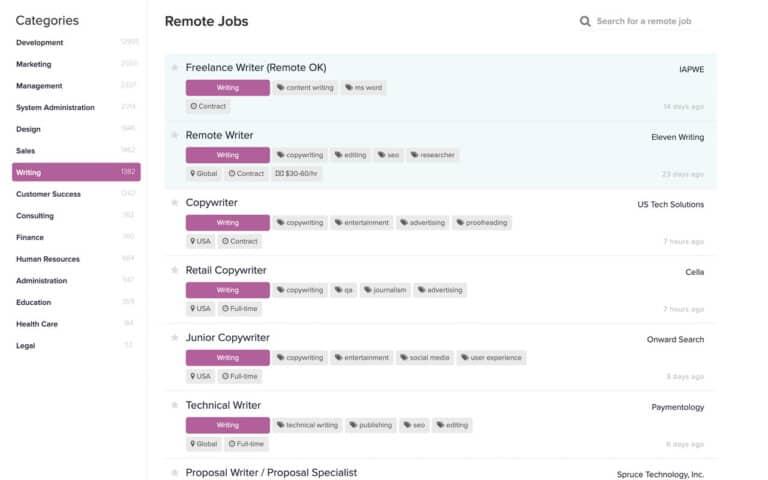
Freelance Job Boards
When navigating the world of freelance writing, tapping into dedicated job boards can significantly ease the process of finding gigs. These platforms are designed to connect writers with clients looking for specific skills, and they often feature a wide array of job listings, from short-term projects to long-term contracts. Some of the most well-regarded job boards include:
- Upwork – A versatile platform that hosts various writing categories.
- Freelancer.com – Known for its competitive bidding approach.
- Fiverr – Ideal for offering services at various price points.
- ProBlogger Job Board – A targeted space for blog writing opportunities.
- Remote.co – Focused on remote work, including freelance writing positions.
These job boards not only provide access to a plethora of projects but also offer valuable features like client feedback ratings, which can help freelancers assess the reliability of potential clients. Additionally, many platforms allow for profile customization, enabling writers to showcase their skills, past work, and personal brand effectively. Understanding how to navigate these platforms can make all the difference in landing the right freelance jobs, fostering both professional growth and creative satisfaction.
| Job Board | Key Features |
|---|---|
| Upwork | Wide range of categories, client ratings |
| Fiverr | Service offerings at fixed prices |
| ProBlogger | Focused on blogging jobs |

Freelance Branding Strategies
To stand out in the crowded freelance writing landscape, establishing a compelling personal brand is essential. This process involves showcasing your unique voice and perspective while maintaining professionalism in every interaction. By defining your niche and understanding your target audience, you can create content that resonates deeply. Consider the following strategies to strengthen your brand:
- Develop a Strong Portfolio: Curate pieces that highlight your best work and demonstrate your versatility.
- Leverage Social Media: Utilize platforms like Twitter and LinkedIn to share insights and connect with potential clients.
- Create a Professional Website: This acts as your digital business card, where clients can learn more about you and your services.
In addition to these strategies, consistency in your messaging and visual identity is crucial. Regardless of the platform, whether it’s a blog, social media account, or personal interactions, your branding should reflect your values and style. To fine-tune your message, consider performing a self-assessment:
| Aspect | Essentials |
|---|---|
| Voice | Authentic, engaging, and relatable. |
| Visuals | Consistent color palette and typography. |
| Target Audience | Identify who you want to reach and tailor your content accordingly. |

Freelancing in Graphic Design
Freelancing in the realm of graphic design offers a unique blend of creativity and entrepreneurial spirit. Designers can explore a myriad of styles and techniques, crafting visual narratives that resonate with clients and audiences alike. The flexibility of freelance work allows graphic designers to choose projects that align with their personal brand and artistic vision, fostering growth and enabling them to build a diverse portfolio. This autonomy not only enhances creativity but encourages adaptability, as freelancers often juggle multiple roles—designer, marketer, and project manager—all while meeting deadlines and maintaining relationships with clients.
To thrive as a freelance graphic designer, it’s essential to cultivate a robust skill set and establish a professional presence. Here are some critical steps to consider:
- Build a Strong Portfolio: Showcase your best work through an online portfolio to attract potential clients.
- Network Actively: Join design communities and attend industry events to connect with other professionals and clients.
- Set Clear Pricing: Research industry standards to determine your rates, ensuring they reflect your skills and experience.
- Seek Feedback: Regularly request critiques to improve your work and client interactions.
Additionally, understanding the business side of freelancing can set you apart in a competitive market. Managing your time effectively, handling contracts, and keeping up with client communication are vital components. Here’s a simple overview of tasks a freelance graphic designer may engage in:
| Task | Description |
|---|---|
| Client Consultation | Discuss project requirements and gather insights into client expectations. |
| Project Management | Organize tasks and timelines to meet deadlines without sacrificing quality. |
| Design Execution | Create mock-ups and final designs based on client feedback. |
| Revision Management | Implement changes and adjustments as per client requests. |

Freelance Personal Development
Embarking on a freelance writing career is not just a journey of skill acquisition; it’s a holistic approach to personal growth. As you navigate this path, you’ll find that developing a variety of competencies not only enhances your craftsmanship but also enriches your life. Here are some essential areas to focus on:
- Time Management: Mastering your schedule ensures productivity and meets client deadlines.
- Networking: Building relationships with other writers and clients can lead to new opportunities and collaboration.
- Self-Promotion: Learning how to market yourself effectively can increase visibility and attract potential clients.
- Continuous Learning: Staying updated with writing trends, tools, and techniques can sharpen your skills.
Alongside these skills, it’s crucial to cultivate resilience and adaptability in the face of challenges. The freelance landscape can be unpredictable, and developing a mindset that embraces change will serve you well. Consider keeping a personal growth log to track your progress and reflect on your experiences. This can include:
| Skill Area | Current Ability | Goal | Action Steps |
|---|---|---|---|
| Writing Skills | Intermediate | Advanced | Take online workshops and seek feedback. |
| Client Management | Basic | Proficient | Learn negotiation techniques and communication strategies. |
| Financial Literacy | Developing | Confident | Read books on freelance finance and budgeting. |
Freelance Income Diversification
Diversifying your income as a freelance writer is not just a strategy; it’s a survival skill in the ever-changing landscape of the gig economy. By broadening your revenue streams, you can create a more resilient business model that adapts to market fluctuations. Consider exploring different types of writing opportunities that can complement each other, such as:
- Blog posts – Regular content for various websites.
- Copywriting – Crafting persuasive content for marketing.
- Technical Writing – Documents that require precision and clarity.
- Ghostwriting – Writing on behalf of others, offering anonymity.
- Self-publishing – Creating your own books or e-books.
Moreover, leveraging platforms and networks can open doors to alternative income avenues. Establishing a presence on freelance marketplaces enables you to connect with clients looking for your specific expertise. Additionally, consider developing passive income sources through:
- Online courses – Teaching others what you know.
- Membership sites – Offering exclusive content behind a paywall.
- Affiliate marketing – Promoting products for commissions.
As you venture further into the world of freelance writing, embracing diversification can help safeguard your career against unexpected shifts while enhancing your creativity and skills.
Freelance Career Growth
As a freelance writer, the journey of growth is often both exhilarating and daunting. Embracing opportunities for skill enhancement is vital. Writers should actively seek to expand their portfolio through diverse projects, which not only enriches their experience but also makes them more marketable. Consider the following approaches to boost your freelance writing career:
- Diversify Your Skills: Experiment with different writing styles such as blog posts, copywriting, or technical writing to broaden your expertise.
- Build a Personal Brand: Establishing a strong online presence through social media and a dedicated website can attract clients and showcase your work.
- Network Actively: Attend writing workshops, webinars, and local meetups to connect with other writers and potential clients.
- Seek Feedback: Constructive criticism helps you identify areas for improvement, making your writing stronger.
Another key aspect to nurturing your freelance growth revolves around understanding and navigating the business side of writing. Setting clear goals and monitoring progress can lead to immense personal fulfillment and professional success. Consider creating a simple framework to outline your milestones:
| Goal | Description | Timeline |
|---|---|---|
| Increase Client Base | Acquire 5 new clients within the next quarter. | 3 Months |
| Enhance Writing Skills | Complete an online writing course. | 1 Month |
| Establish Authority | Publish 2 articles in reputable writing publications. | 6 Months |
Freelance Market Trends 2024
As we move into 2024, the freelance writing landscape is evolving at an unprecedented pace, driven by technological advancements and shifting client expectations. Remote work remains a dominant theme, making it easier than ever for writers to collaborate with international clients. Additionally, the rise of AI-powered writing tools is enhancing productivity, although they bring a new layer of competition. Freelancers are encouraged to adapt by cultivating unique voices and offering specialized services that machines cannot replicate. The demand for niche expertise, such as sustainability, tech, and health writing, is at an all-time high.
Furthermore, the emphasis on personal branding is reshaping how freelance writers position themselves in the market. Writers are increasingly turning to social media and personal websites to showcase portfolios and share insights, helping them build strong connections with potential clients. Offering value through thought leadership can significantly enhance visibility while leveraging platforms like Substack or Medium can provide additional revenue streams. This landscape necessitates a strategic approach to networking, where writers actively engage in relevant online communities and cultivate relationships that may lead to lucrative opportunities.
The Conclusion
As we navigate through the ever-evolving landscape of freelance writing, it’s essential to recognize that each writer’s journey is uniquely their own. From the first tentative steps of crafting a pitch to the exhilarating moment of seeing your words come to life on a page, every experience contributes to your personal tapestry of growth.
Embracing the uncertainties, the rejections, and the victories along the way is what truly shapes your path. Remember, the key to success lies not just in honing your craft but in fostering a resilient spirit that can adapt to the ebbs and flows of this creative profession.
As you take your next steps, whether you’re a seasoned veteran or just beginning, keep in mind that the journey is as important as the destination. Trust the process, celebrate your milestones, and never stop exploring the stories waiting to be told. After all, in the art of freelance writing, the only limit is the canvas of your imagination. Happy writing!


